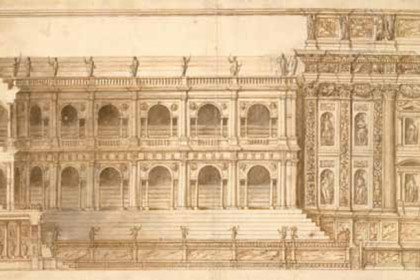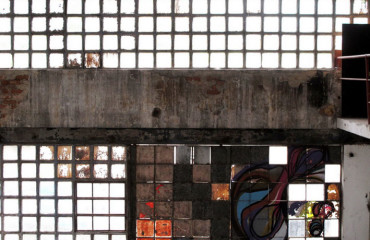
When Charles Dickens visited the Teatro Farnese in Parma, found it in a state of disrepair: holes in the roof, rotten wood, rags hanging overblown, mice everywhere. What was the ultimate expression of the ambition of Ranuccio I Farnese lay desolate, shadow of a past that glorified the dynasty and that, for this reason, the successors Borbone someway repudiated and left to neglect. The misfortunes of the theater touched the peak on May 13, 1944, when it was severely affected by the bombing of the Allies. Now restored, it can be considered a true monument of a magnificent and complex era, not without its mysteries and contradictions.
The idea of building a large stable space for the scenic representations, as had been done in the most important Italian courts, originated from the desire of the Grand Duke of Tuscany, Cosimo II, to cross all of northern Italy to make a pilgrimage to the tomb of San Carlo Borromeo in Milan, from Parma. Ranuccio I, seeking alliances with Medici aimed at the wedding of the newborn son Odoardo, undertook in 1617 the construction of a magnificent theater in which accommodate the sovereign and immediately began the work, transforming the Armory of Pilotta inaugurated only a few years earlier.
The Duke gave the task to Giovanni Battista Aleotti, called the Argenta from Ferrara. He designed a room with U form with stairs and parapets decorated with carvings of cherubs, walls covered by a series of two lodges with medallions, paintings of ancient warriors, telamons and female figures of Virtues, a ceiling depicting Olympus and the glory of the Farnese, the sides of the proscenium two equestrian statues of the ancestors of Ranuccio – Alessandro and Ottavio – and, even more amazing, a stage with complex machines practicable simultaneously that allowed the change of scenes and incredible effects.
Despite the work proceeded – not without difficulties and quarrels between the workshops of painters and with the passage from Aleotti to Enzo Bentivoglio as superintendent of the factory – at the end of 1618 it was realized that Cosimo II would not be on the road. The yard, already well advanced, slowed and perked up only nine years later, in view of the marriage between Odoardo and Margherita de’ Medici. The theater was inaugurated on December 21, 1628 with a work-tournament set to music by Monteverdi, Mercury and Mars, which was performed with the use of 21 machines, sea monsters, the auditorium flooded to simulate a naumachia and a tournament with four quadrilles knights.
It was not, however, the beginning of a long series of shows: up to 1732, for all Farnese era, were set up only eight performances. To mark the end of the Farnese as the theater was built, commissioned by Maria Luigia, today’s Teatro Regio.
 English
English  Italiano
Italiano 












